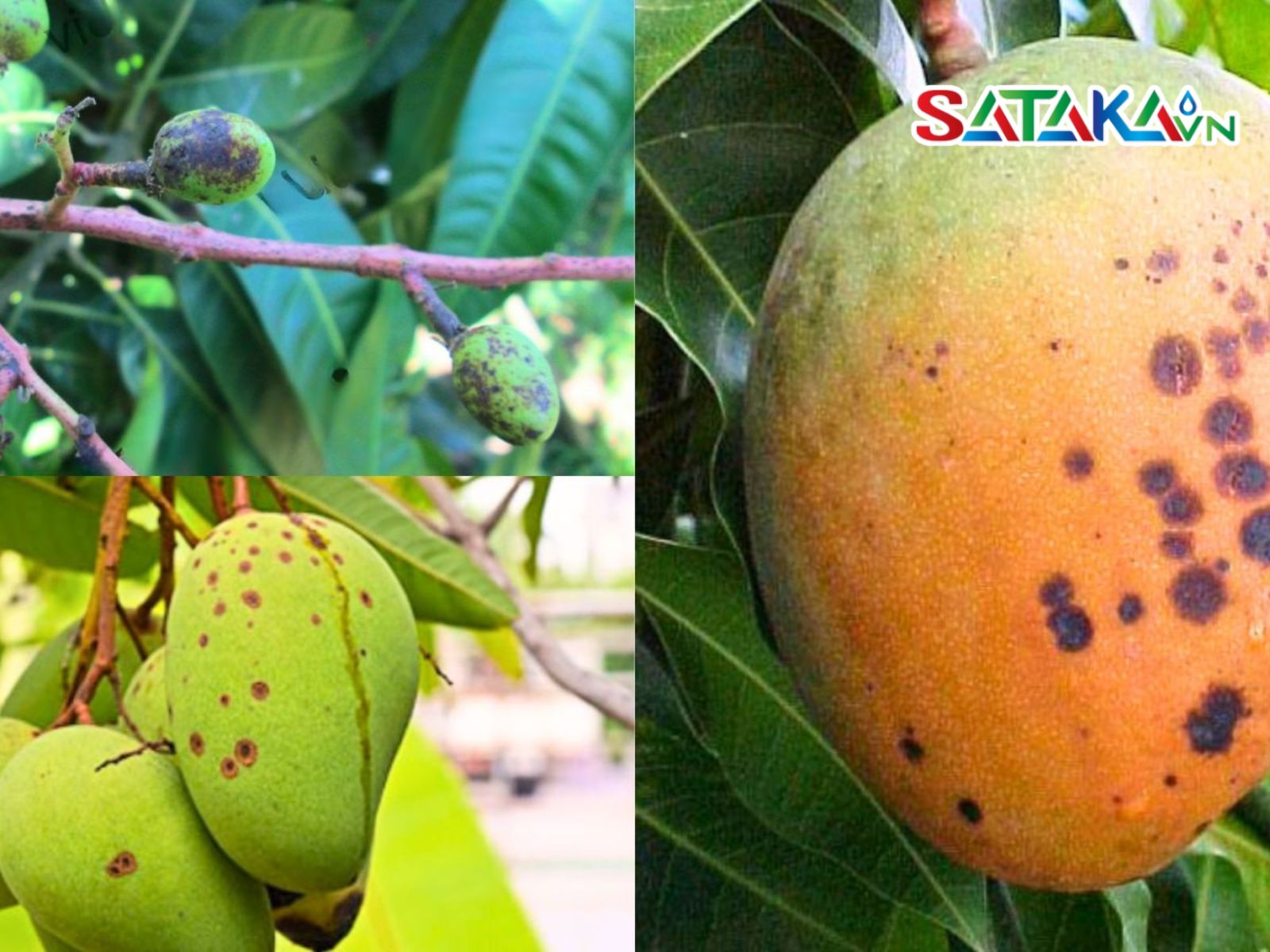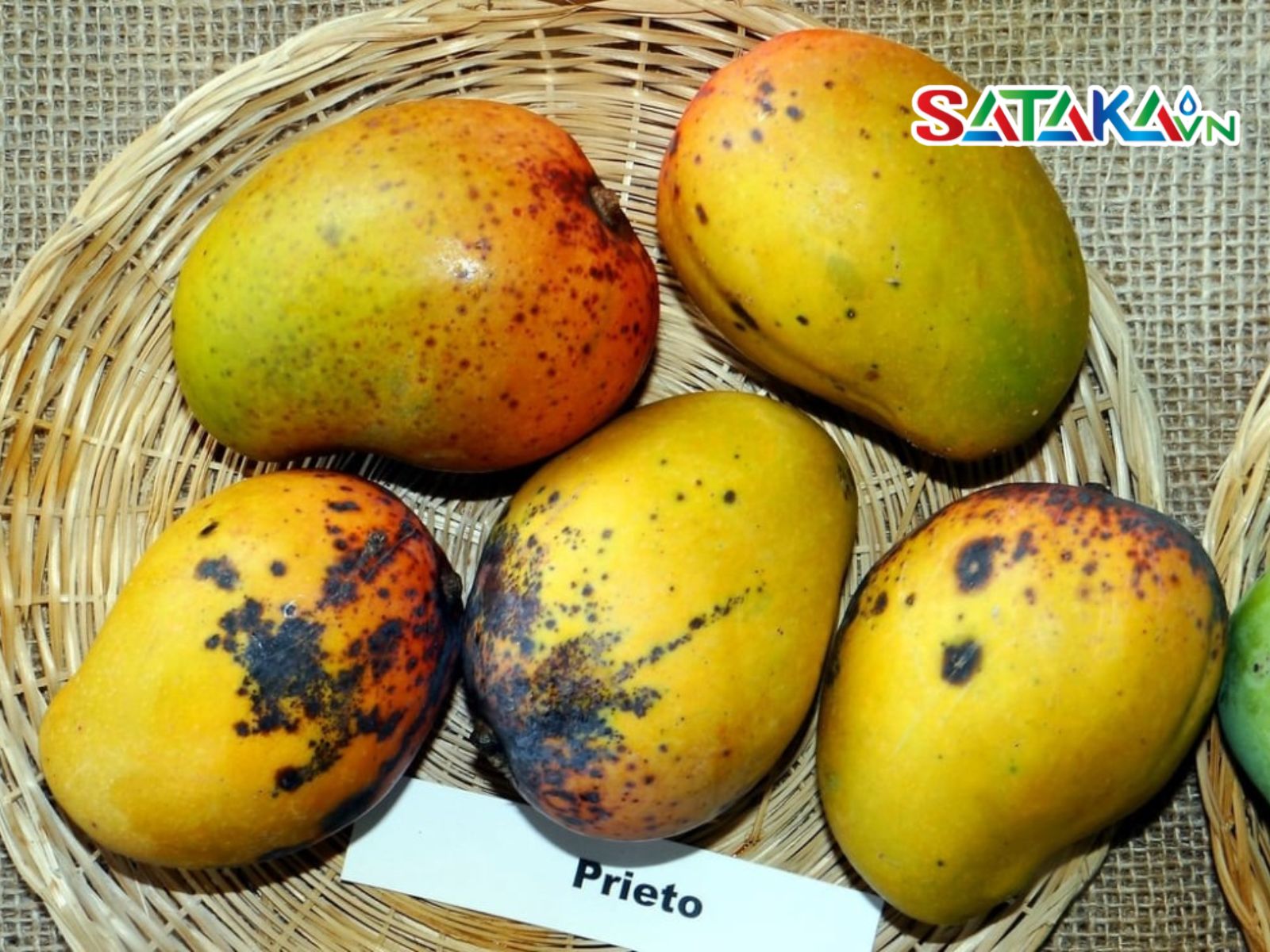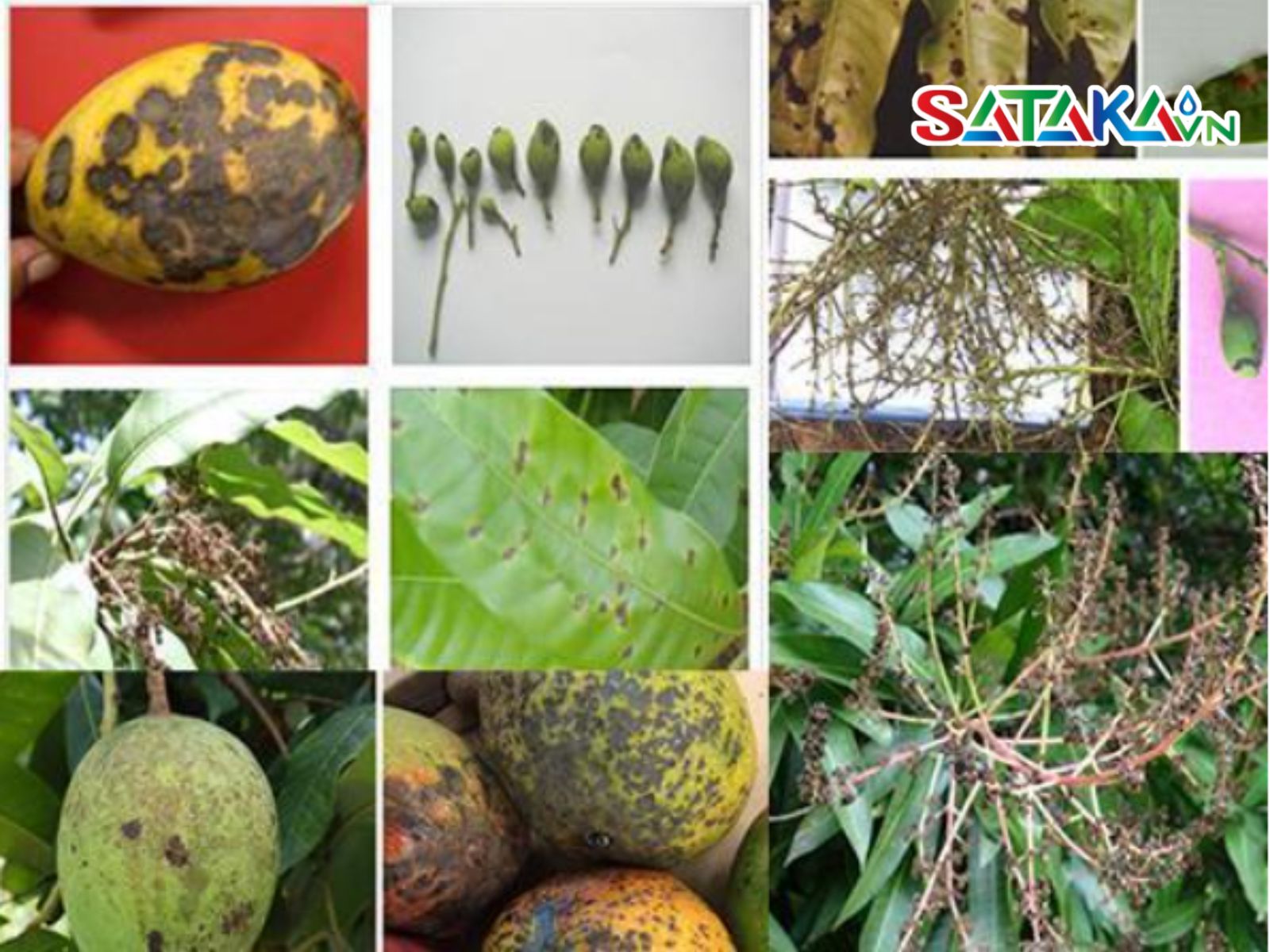Learn in detail about mango anthracnose disease – its causes, recognizable symptoms, and effective prevention and control measures to help protect healthy mango orchards and increase sustainable yields.
Mango anthracnose disease damages many parts of the mango tree, including leaves, young branches, flowers, and fruits. This can lead to reduced yield and fruit quality, and can even cause the tree to weaken if not detected and treated promptly. Learn about its causes, symptoms, and control methods below!
1. Symptoms of Anthracnose Disease in Mango Trees
When cultivating mangoes, anthracnose disease is one of the top concerns for farmers due to its strong destructive nature. It progresses subtly but rapidly and can easily spread over a wide area if not detected in time.
1.1 On Mango Leaves
In the stage when the tree is producing young leaves, farmers can easily spot abnormal signs such as:
- Small, circular or angular spots appearing on the leaf surface.
- The center of the spot is grayish-brown, with a pale yellow border – this is a typical characteristic of anthracnose.
- Leaves become twisted, dry, torn, and may even drop prematurely if the disease is severe. In just 3-5 days, the disease spots can merge to form large patches, causing the tree to weaken rapidly.
1.2 On Young Mango Branches
Next are the young branches – the most vulnerable part of the tree when infected:
-
Irregular spots appear, initially small but spreading to surround the young branch if left untreated.
-
Consequence: Young shoots gradually die, the tree loses its growth vigor, and flowering is poor.
1.3 On Mango Flowers
For mango orchards preparing to bloom and bear fruit, the appearance of anthracnose on flowers is a red alert:
- Buds, pedicels, and flower clusters dry up and turn black, falling off easily.
- Massive flower drop can cause farmers to lose an entire season's crop.
1.4 On Mango Fruit
Anthracnose disease on mango fruit occurs from the time the fruit is young until it ripens:
- On the fruit skin, it initially appears as a round, black, sunken spot, which then spreads to form concentric rings.
- In rainy conditions, fungal spores accumulate at the fruit tip, causing black rot or black streaks extending from the tip to the stem.
- When the disease is severe, young fruits drop in large quantities; for mature fruits, the fungus penetrates through the stem scar, deep into the fruit flesh, causing the fruit to rot quickly when ripe.

Symptoms of Anthracnose Disease in Mango Trees
2. Causes of Anthracnose Disease in Mango Trees
The primary agents causing anthracnose disease in mango trees are the fungi Colletotrichum gloeosporioides and Colletotrichum acutatum. These two types of fungi can attack all young parts of the tree – from leaves, shoots, and flowers to fruits. When infected, mango trees can experience:
- Massive shedding of flowers and fruits, severely impacting yield.
- Dry leaves and wilting shoots, disrupting the growth process.
- If severe, the entire tree may weaken and gradually die.
3. Conditions for Anthracnose Disease Onset and Development in Mango Trees
In addition to the harmful agents, environmental conditions also play a crucial role in promoting the rapid onset and spread of anthracnose disease in mangoes.
-
Humid weather, frequent rain, and dense fog create favorable conditions for Colletotrichum fungi to develop, especially during the stages when the tree is producing young shoots, flowering, and setting fruit.
-
Improper care techniques, such as unbalanced fertilization or excessive nitrogen, weaken the tree. Failing to prune branches leads to dense canopies, reducing light penetration and increasing internal humidity, which creates an ideal environment for the disease-causing fungi to thrive.
4. Harmful Effects of Anthracnose Disease on Mango Trees
Anthracnose disease in mangoes not only causes temporary damage but also leads to severe consequences if not treated promptly:
-
Reduced Yield: The disease causes leaf and young shoot shedding, leading to nutrient deficiencies and preventing the development of fruit-bearing branches. During the flowering stage, the disease causes flowers to drop and young fruits to rot and fall, sharply decreasing production.
-
Reduced Fruit Quality: Anthracnose-infected fruits often have dark, deeply sunken spots, diminishing their aesthetic appeal. The fruit flesh may change in taste, becoming less sweet and losing its juiciness, disappointing consumers.
-
Tree Weakening: Continuous leaf shedding reduces the tree's photosynthetic capacity; damaged shoots cause an imbalanced canopy, reducing the ability to produce new growth. A weakened tree is more susceptible to other pests and diseases, leading to higher recovery costs.

Harmful Effects of Anthracnose Disease on Mango Trees
5. Measures to Prevent and Control Anthracnose Disease in Mangoes
Once you understand the symptoms, causes, and extent of damage, the most important thing for farmers is to know how to proactively prevent and control mango anthracnose.
5.1 Cultural Practices
These are sustainable preventive solutions that help boost the tree's resistance and limit favorable conditions for anthracnose to develop in mangoes.
-
Orchard Sanitation: Collect and destroy fallen leaves, dry branches, and dropped fruits, rather than leaving them under the tree canopy. Clearing weeds helps increase air circulation and light, reducing the humid environment where fungi thrive.
-
Pruning and Canopy Management: This ensures even sunlight penetration and reduces humidity buildup, while also making spraying and care more convenient.
-
Fruit Bagging: Once the fruits reach chicken-egg size, you should bag them with specialized bags to prevent fungal infections and pest damage.
-
Avoid Inducing Flowering During the Rainy Season: High humidity creates favorable conditions for fungi, so don't stimulate the tree to flower or intervene heavily during this period.
5.2 Chemical Control Measures
In cases where the disease has already appeared or the orchard has a history of anthracnose infection, using specialized chemical fungicides is necessary to eliminate the pathogen promptly and protect the trees.
-
Asmaitop 325SC: Contains Azoxystrobin + Difenoconazole, a strong systemic and translaminar fungicide that helps kill fungi immediately upon spraying.
-
Supertim 300EC: Composed of Propiconazole + Difenoconazole, it offers lasting efficacy, even after spraying in rainy conditions.
-
AZOSTAR GOLD 35SC: A broad-spectrum systemic product capable of eliminating fungi at various stages, inhibiting even spore germination.
-
CHAPAON 770WP: Its active ingredient, Copper Hydroxide, is specifically used to effectively prevent and treat anthracnose in mangoes, leaving minimal toxic residue.

Measures to Prevent and Control Anthracnose Disease in Mangoes
Mango anthracnose is a serious threat that can cause comprehensive damage to the yield, quality, and health of the tree. At Sataka, we always stand by farmers to help them achieve high quality and sustainable results over time. Keep following us regularly so you don't miss out on useful and up-to-date agricultural knowledge!
SATAKA VIETNAM JOINT STOCK COMPANY
Address: No. 246 Nguyen Kim Cuong, Tan Thanh Dong Commune, Cu Chi District, Ho Chi Minh City
Hotline: 0856.555.585 or 0789.917.927
Website: https://sataka.com.vn/


